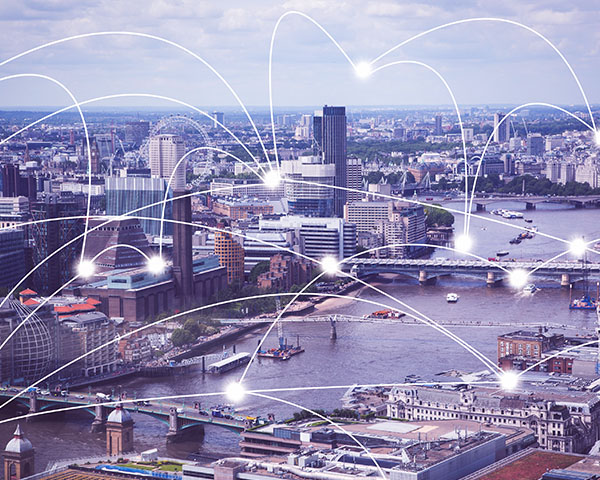INSIGHT
How do we keep the remote work momentum going after Covid-19?
Until 2020, the remote working future was perceived as just that: the future. Then COVID-19 intervened.
Almost overnight, organisations all over the country were left with a stark choice: enable their people to work remotely or have them not work at all.
They were forced to make fast, reactive decisions on implementing and upgrading technology, with a focus on short-term fixes.
Now, the UK is setting itself up for another period of lockdown in the face of the second wave. But are organisations really planning to make remote working the ‘new normal’?
For the majority, the answer is yes.
We recently spoke to 127 of our own customers and 230 c-suite level executives across the UK to understand the impact of Covid-19 and what the future looks like.
63% of public sector organisations said they will be continuing flexible working practices in future, while 55% of private sector firms said the same.
Some have already made the decision public.
Royal Bank of Scotland told 50,000 staff across its RBS and NatWest brands that they’ll be working from home until 2021, while Google told some 200,000 employees and contractors that they won’t be required back in the office until June 2021.
The question remains, then: what does the UK’s remote working future look like? And how can we make remote working technologies and processes work better for everyone through this next stage of the pandemic?
Breaking it down by sector
In local government, remote working is set become part of the ‘forever normal’.
Many councils have realised they can, and should, give citizens permanent online access to many of the services they use. They’re also exploring how the benefits of remote working will grant their employees more flexibility while cutting costs and reducing their real estate footprint.
30% of the local authorities we spoke to said they’re planning to sell off or stop renting some of their office space.
Infographic: from The new local authority, Local Gov report (p5)
Yet many local government organisations lack confidence in the safety of their infrastructure. They don’t believe it lets employees work remotely in a way that is secure or compliant with strict public service guidelines such as GDPR.
Security is also a key concern for retail companies.
Retailers hold a wealth of sensitive customer information they’ve collected across years of interactions – information that is now at risk due the widespread use of non-approved devices and applications by employees, otherwise known as shadow IT.
Some short-term successes of retail flexible working have relied on relaxing IT policies, letting employees use the apps, devices or processes that make them more productive.
But businesses cannot continue to let retail staff store sensitive data on personal devices without running the risk of a data breach and reputational damage.
There are similar issues for those working in the justice system and policing.
Sensitive information in these fields can be a matter of national security, not to mention citizen privacy and safety. Looking ahead, employees will need to know the data they work with is secure without having to sacrifice operating practices.
Class may now be back in session, but teachers and educators will be fully aware of the potential for further disruption the second wave will bring.
With schools exploring staggered teaching hours and reduced class sizes, flexible working for both teachers and students may have to be reintroduced so children can continue to learn in safety.
Infographic: from The new way to learn, Education report (p6)
Our research showed that 62% of education professionals expect more flexible working practices to continue.
But there have been challenges.
70% of teachers feel their students have not adapted well to remote learning so far, according to a study by Tes Global, while an estimated 700,000 children have been unable to complete schoolwork because of poor internet connection.
While much effort has been made to protect the health of staff and children in class, there needs to be just as much of a focus on giving them an online education that is accessible and secure.
For the construction industry, remote working will ensure that all non-essential construction workers can remain at home.
Many tasks can be done remotely, from handling building documentation to project management.
Digital collaboration means construction work can continue. But the work done remotely between the client and design team, engineers and contractors all needs to be effectively managed to reduce waste, avoid costly errors and accurately project delays.
Infographic: from The new way to learn, Education report (p6)
Infographic: Flexible working as the norm, Covid Report (p.12)
Remote working solutions for revolutionary outcomes
Across these separate industries there are the same core challenges: security and productivity.
Fortunately, there are steps organisations can take to overcome them.
When it comes to security, the first action is to use a secure remote access virtual private network (VPN). This allows all staff working from home to connect to a secure office network using a simple program that sits on their desktop.
A VPN is great for sharing sensitive data and operating secure applications. It’s a completely scalable private network on which you can add any extra layers of security you want (end-to-end encryption, for example).
Keeping sensitive information safe should always be a number one priority, but it’s even more important in the new remote working reality.
For local government organisations, more security would give leaders confidence that their employees can keep citizens’ data safe. It would give staff the same flexible working capabilities in the public sector as in the private, allowing local authorities to recruit and retain top talent.
Meanwhile, retailers can take control of sensitive information, strengthening themselves against cybersecurity threats, while educators can create secure virtual learning environments that gets pupil engagement back on track, reducing the impact of lockdown’s “lost teaching time”.
When it comes to productivity, organisations should look to incorporate cloud-based communication technology.
Employees can use cloud systems to access a wealth of information from a single location, or even have the data they need integrated into applications they’re familiar with – such as Microsoft Teams and Salesforce.
Cloud communications platforms can also host voice solutions that connect colleagues on any device, wherever they are, giving them that all important “office experience”. This means employees don’t have to waste time switching between different apps and systems to chat to their teammates or look for customer information.
Ordinary people everywhere can benefit from the better quality of service created by the better sharing of knowledge, data and resources between departments in local government.
Construction businesses can manage projects as efficiently as if everyone is on site – allowing people’s dream homes to be built on time.
The higher education sector can use collaborative seminars to improve the experience and learning process for students.
And everyone can look forward to a more flexible working life, not just during this pandemic but in the months, years and decades that follow after.
Virgin Media Business will also be publishing more research findings and customer insights on our dedicated hub page.






